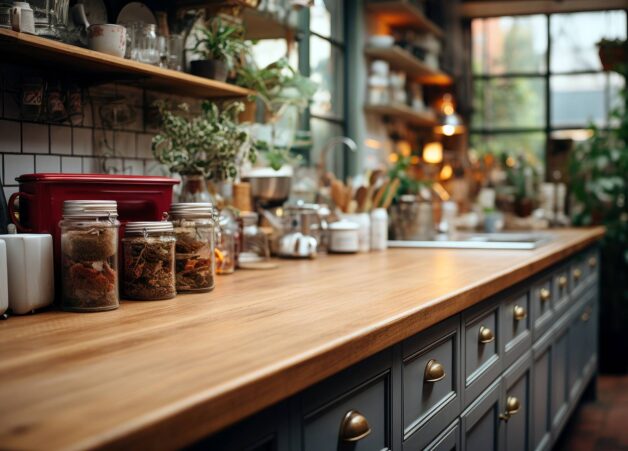 I like my stuff — how about you? We, Americans, love our stuff. We build big houses to store our stuff, purchase storage units to house our stuff and often lament that we have too much stuff (while we accumulate more stuff!).
I like my stuff — how about you? We, Americans, love our stuff. We build big houses to store our stuff, purchase storage units to house our stuff and often lament that we have too much stuff (while we accumulate more stuff!).
How did we get here? What does all this stuff do for us? How does it make us feel?
Whether we are a mass collector of old T-shirts, antiquated childhood games, pillows, trophies, lamps, shoes or souvenirs, most of us, if we take an honest appraisal, will arrive at the conclusion, “I have too much stuff.”
Have you ever thought of the effect all these possessions actually have on you? The amount of time it takes to find a place for all of it — cleaning, organizing, dusting or putting it all away can seem like a relentless taskmaster.
We often do not realize the toll the accumulation of things around our homes has on our mental, emotional, relational and even physical health and wellbeing.
When our space is cluttered, we can also feel mentally cluttered, foggy and not at ease. Too much stuff can be a safety hazard as well, depending on where it all lives. This is true whether our space is taken up by too many physical objects — books, nick-knacks or stacks of things like papers, folders or magazines.
When is the last time you paused, looked around and did a realistic inventory of all your stuff?
Ladies, how about your shoe inventory? Are there 20, 50 or 100 or more pairs in your possession? How often do you wear them? How much space do they take up in your closet or under your bed? Or maybe they have walked themselves into the guest room closet as well?
As a family, how many basketballs, garden hoses or old golf clubs are lining the walls of your garage or storage shed? A lot? You are not alone! It’s so easy to accumulate, and so much more time consuming and agonizing to go through all that stuff.
Many of us look at the overstuffed closet, breathe a heavy sigh, shut the door and move on to something else. Until life presents us with events or opportunities — a marriage, divorce or move — that force us to go through our stuff.
Instead of waiting for the next major life event, consider going through your things intentionally. Getting rid of some stuff allows you to breathe easier, enjoy your home and life more, as well as improve your overall health and mental wellbeing. And it doesn’t have to be overwhelming if you downsize and declutter your stuff in small, incremental steps.
Going through a divorce several years ago and downsizing from a nearly 4,000-square-foot home to under 1,000 square feet gave me the opportunity to go through all my stuff.
Initially, if felt daunting — when to go through it all, what to keep, donate, toss or store.
Here’s some ways I made the process manageable and actually enjoyable, and you can too.
I set appointments in my schedule.
I acted as though these scheduled times were important meetings with clients. Even if I only had 20 minutes at a time, this one hack ensured that I could make this an ongoing manageable project. I did not wait to see if I “had time;” rather, I consistently scheduled it. Scheduling one day at a time ensured steady progress.
I tackled one room at a time.
Going through an entire house can feel daunting when it comes to getting rid of stuff, so making it manageable by taking it one room at a time worked to reduce my stress.
I set mini goals.
If I had 15 or 20 minutes, then my goal might be going through one box or bin only. I set my phone alarm and kept chipping away at it. I set a mini goal for each “session.”
I ensured I was organized.
Each time I would go through things, I’d have my trash and recycle bins, donate bin, storage bin and “pack with good access” box or bin ready to go. I had labels, markers and anything else I needed nearby.
I created mini rewards.
After many of my “going through stuff” sessions, I often would schedule something enjoyable shortly after — a lovely cup of tea, reading time or spending time with a friend.
I paused and relished.
As I rummaged through my belongings, I would allow myself a moment when needed to consider the memories or sentiment associated with certain items, be it a T — shirt, souvenir or another collectable. It gave me opportunity to reflect and appreciate different seasons of my life.
I established a system.
When I would pick up an item, whether it was old work files, clothes, shoes, coats, etc., my process was to ask myself three questions:
- Am I using this? If yes, keep it.
- Have I used this in the last 6-12 months? If no, how likely am I to use this in the next six months? That helped me determine what to keep and what to let go of.
- Would this bless someone else’s life if I donate it? It’s the latter that allowed me to surrender so much stuff.
I revisited my core values.
By doing such an extensive inventory of my stuff, I was able to ponder what really mattered to me. When I felt conflicted about whether to keep or let something go, I checked in with my values to help me decide.
I now live with a lot less (stuff and stress) than I did all those years in a big house. While a larger home may offer some benefits, my smaller footprint offers peace and inner contentment. Having less space and fewer things motivates me to be very intentional, retaining only things that are truly needed and bring me joy.
I no longer spend hours and hours cleaning. Every room in my downsized home is designed and organized for maximum utility. Aesthetically, I incorporated colors that uplift, art that inspires and creative utilization of space. My goal was that every room I walk into makes me smile.
Learning to live with less may be one of the best things you will ever do for yourself and your family. Because, as the saying goes, you can’t take it with you.
You too can learn to live with less and love it more.
Have your own story of downsizing, decluttering or loving your life more with a smaller space and less stuff? Send in your comments and stories to yrfyv@gurjryyfcevatpbzcnal.pbz.





























